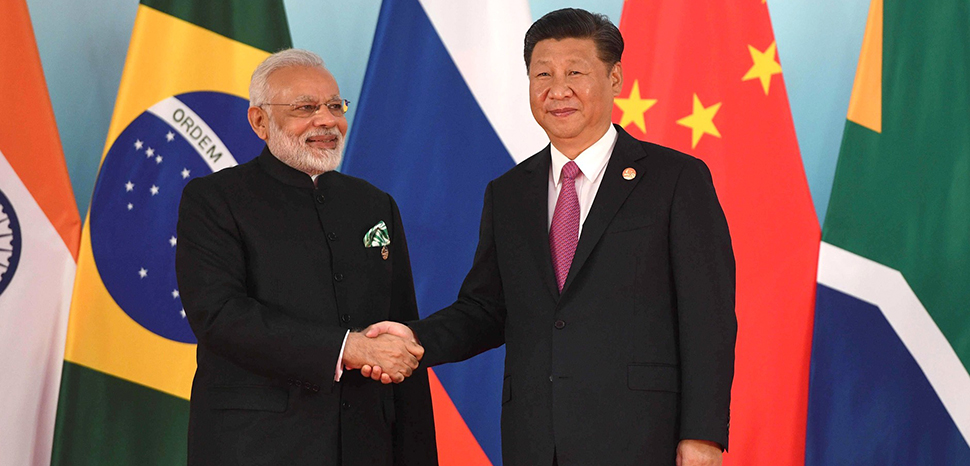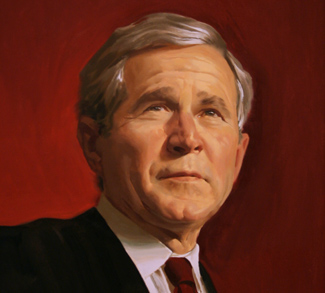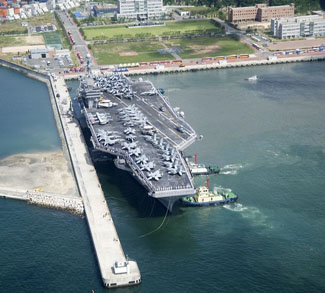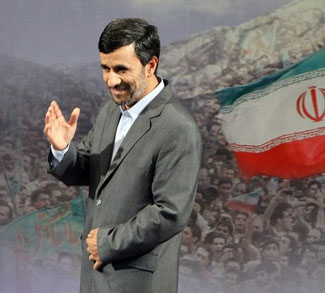India will hold its 18th general election on April 18, 2024, and Prime Minister Narendra Modi and his Bharatiya Janata Party (BJP) are poised to win a third term. Similar to his first and second terms, a significant amount of historical and contemporary political and economic baggage will burden Modi’s third term and his relations with China. While his anticipated election victory would likely result in the continuation of complex India-China issues and tensions from his previous years as prime minister, Modi appears to have a stable but delicate relationship with China to manage.
Competing perspectives of Modi
The vast majority of Chinese internet users have a positive view of India’s leader, calling him ‘Immortal Modi’ or ‘Modi Laoxian’ (‘不朽的莫迪’). Based on data from the popular microblogging platform Weibo (China’s version of Twitter), which has more than 598 million active monthly users, many Chinese people also think that Modi is crucial to preserving the balance of power in the world.
Competing perspectives of Western-style liberal democracy and China’s political model commonly, though unfairly and inaccurately, portray the former as the stable foundation of a well-functioning society, whereas the latter, marked by ardent nationalism and a supreme leader, is viewed as volatile. Weibo users’ comments shed light on their perceptions of democracy as a fundamentally unstable political system beset by internal conflicts, corruption, and misrepresentation. Indeed, they frequently dismiss the concept of democracy as a whole process. Many Chinese people believe that larger nations, even ones that claim to be democratic, tend to adopt authoritarian characteristics.
Western media often express this erroneous belief when reporting on political developments in India. During Modi’s tenure, debates about the essence of Indian democracy have shifted, which is consistent with Chinese perspectives on the democratic system in general but not on India’s democratic system specifically. This lively but partisan debate, not confined to academia, centers on the purported new chapter in Indian history, where Modi’s leadership has distanced the nation from the fundamental principles of democracy, minority rights, and executive accountability.
Nitasha Kaul, a well-known Modi critic, writes for the Australian Institute of International Affairs that ‘the Modi myth proffers the idea of a paternal, ascetic, and efficient leader at the helm of a civilizational resurgence of India as a “Vishwa Guru” (world leader).’ In 2021, Jostein Jakobsen and Kenneth Bo Nielsen of The Centre for Development and the Environment at the University of Oslo added India under Modi to their list of ‘authoritarian, populist, and right-wing regimes.’ In 2023, The Guardian published an article calling Modi’s government ‘autocratic’ and ‘illiberal.’ Similarly, a Financial Times piece from the same year highlighted Modi’s alleged ‘authoritarian streak’ as a major concern for the West.
However, China’s recent mention of Modi contrasts sharply with the much-embellished portrayal of India during his tenure. On 2 January 2024, Zhang Jiadong, the director of the Centre for South Asian Studies at Fudan University in Shanghai, expressed his admiration for Modi, his economic and foreign policy, and his ‘Bharat narrative’. Zhang claimed that India has become more proactive and self-assured on a national and international level. His remarks were published by the state-run newspaper Global Times. Coming from the Chinese government, these statements might seem unconventional, but when considering India’s efforts to create a multi-aligned system in international affairs and the Western disapproval of India following the West’s unsuccessful attempts to steer Modi towards Western alignment, they have geopolitical relevance, particularly regarding China’s relationship with India under Modi.
Though he and his party greatly benefit India, Modi now poses a challenge to governments, intellectuals, and people of Western and Indian ancestry who support Congress. India has a strong governance framework, making it difficult for a single person or political party to attain widespread popularity. For the past nearly 23 years, he has served as Prime Minister of India and Gujarat State Chief Minister, owing to his and his party’s perseverance and nationalist, India-focused agenda, not because he is a despot or authoritarian. People understand how regional and global environments are degrading and changing, as well as where India should rank as a developed country on the world map. They are electing him and his party to govern India (or Bharat). Furthermore, the Supreme Court, as the pinnacle body in India’s robust judicial structure, keeps a watchful eye and is well-equipped to deal with any violations of democratic institutions by any person or entity.
The BJP/Modi government at the helm is now well-positioned to bolster India’s economic standing without yielding to any internal or regional pressures. A landslide victory in the upcoming election may allow Modi and his right-wing nationalist government to reshape India into a Hindu nation, with the goal of amending the Constitution to dilute the problematic principles of secularism and socialism while curbing illegal immigration and ethnic separatism, as well as addressing the challenges posed by rising Islamism. In countering Islamism and terrorism in India, the emphasis is on confronting the activities of a subset of extremist Sunni Muslims. This group, while not substantially contributing to the broader Indian society, is increasingly mobilizing for communal interests, becoming susceptible to the influence of a transnational Islamist agenda and global caliphate bogey. Any potential Modi-led government plan will include a comprehensive approach to addressing the dangers posed by these dynamics while also ensuring national security and social harmony. These objectives broadly align with Beijing’s policies in the context of Chinese society.
Tensions
Although most Chinese people have a positive perception of and interest in the Indian prime minister, the relationship between China and India has been tense for many years, creating an environment conducive to the emergence of new and escalating conflicts between the two countries.
Since his initial election in 2014, China has warmly welcomed Modi, and both parties are optimistic about a new era of India-China relations under the BJP. The first encounter between Chinese President Xi Jinping and Prime Minister Modi took place in Fortaleza, Brazil, ahead of the 6th BRICS Summit that same year. Xi conveyed to Modi that China and India are long-term strategic and collaborative allies rather than adversaries, underscoring their common goal of ‘national rejuvenation’ and asserting that cooperation is the most efficient way to achieve it. Despite their outward amicability, India and China continue to have geopolitical conflicts.
The India-China border dispute, which began in May 2020, has been a frequent topic of discussion between Xi and Modi. Furthermore, there have been ongoing clashes and instances of Chinese aggression along the 4,057 km Line of Actual Control (LAC), a notional boundary, particularly in the Ladakh region. China and India have had territorial disputes along their shared border since the countries’ modern beginnings. Both nations engaged in a bloody conflict over this issue in 1962, but it was the only one. However, violent incidents have increased in recent years. Modi, in his third term, cannot ignore or avoid the negative consequences of the current situation for India-China relations. India and China’s reluctance to withdraw along the LAC reflects their postures and aspirations on their respective home fronts, as well as on the international stage, where they both desire to expand their influence as emerging global powers.
The Tibet question
Given the intricacies of historical tensions and Chinese provocations, heightened by the Tibet ‘issue’, handling toxic border relations is bound to be tough. The Dalai Lama, Tenzin Gyatso, who will be 88 in July, and, more importantly, the future Dalai Lama, are major issues in both India and China. India’s stance on Tibet is mainly spiritual, with Tibet’s geographical location leaving ample leeway for potentially significant political consequences. India has the largest number of Tibetan refugees, and the Dalai Lama issue will have an impact on the country. Given India’s rebirth of Buddhism, the country’s next and future prime ministers will take a more active position in any Buddhist-related matters, particularly those involving China.
India has yet to make significant use of the Tibet card in its political dealings with China; nevertheless, on March 9, 2024, Modi paid an official visit to Arunachal Pradesh, India’s Tibet-border state, where he announced, among other efforts, the important Sela Tunnel Project. Beijing claims the state is part of its territory, Southern Tibet (藏南地区), and calls India’s claims ‘ridiculous.’ For China, Tibet represents the ‘three evils’ of terrorism, separatism (or ‘splittism’), and religious extremism. Under Xi, China is aggressively reinforcing its security in Tibet through increasing militarization, surveillance, and other actions. Both countries have dramatically increased Tibet’s geopolitical, cultural, and ecological significance, making it crucial to both.
Cooperation and conflicting conditions
India and China are economically interdependent, and both are important components of a multipolar, multi-aligned world system. The border dispute is still a major worry, especially in light of the fact that both countries have lost soldiers in armed battles. Nonetheless, the prospect of cooperation holds significance, particularly considering the plethora of opportunities for relationship-building and pursuing shared interests. Climate change is one such common problem, necessitating collaboration to decarbonize energy systems and diversify energy sources, while others include addressing security problems in a rapidly changing global environment. At COP28, India and China failed to endorse a promise to triple renewable energy sources by 2030, despite a pledge to transition away from fossil fuels. This highlights the paradoxical nature of power rivalry in international relations and between the two most populous countries, led by Modi and Xi, respectively.
One of Xi’s biggest challenges is the continuing deflationary pressures caused by rising property prices and diminishing construction output. In contrast, if Modi wins, he will inherit a stable rupee and surging Indian markets. India and China have differing inflation rates, but India is in a favorable economic position, and Modi would inherit India’s rising economy and foreign investment opportunities. Overall, India’s economy is strong and steady. India’s and China’s economic positions can have an anchoring effect, limiting or increasing their political capacity and leaders’ influence. Inflammatory or aggressive acts by Xi or Modi would have economic consequences for both, potentially causing additional political turbulence on their respective domestic fronts and increasing economic troubles in an already volatile global context. Neither leader will want this.
India-China relations are unique in nature. And, while Modi and Xi have shown open political affection and promised to address common concerns, the two countries, each with over a billion people, are geopolitical rivals with the ability to influence global affairs in both positive and negative ways. As has been the case in recent years, India-China relations will continue to be stable yet sensitive despite their historical, contemporary, and probable future challenges.
Scott N. Romaniuk is a research fellow at the Corvinus Centre for Contemporary Asia Studies (CAS), Corvinus Institute for Advanced Studies.
Animesh Roul is the executive director of the New Delhi-based policy research group, Society for the Study of Peace and Conflict. He specializes in counterterrorism, radical Islam, terror financing, and armed conflict and violence in South Asia.
The views expressed in this article belong to the authors alone and do not necessarily reflect those of Geopoliticalmonitor.com.




